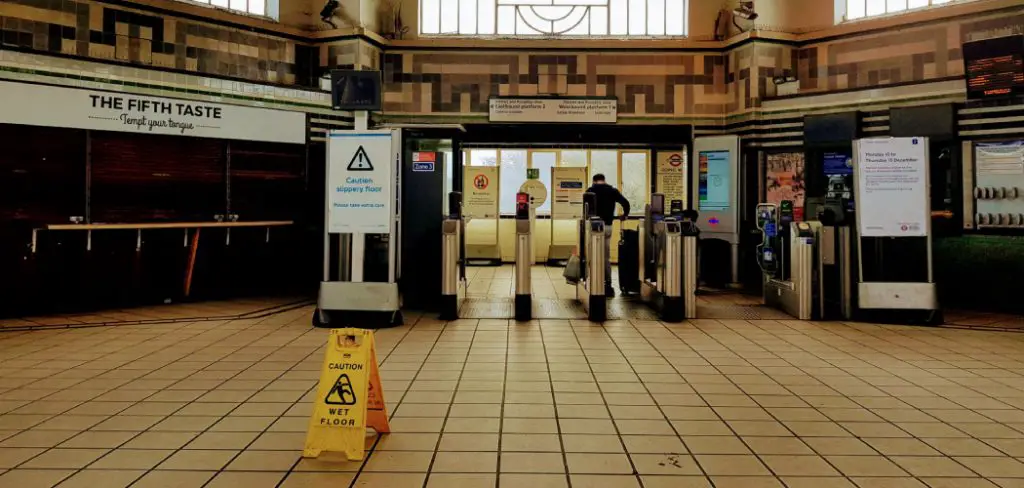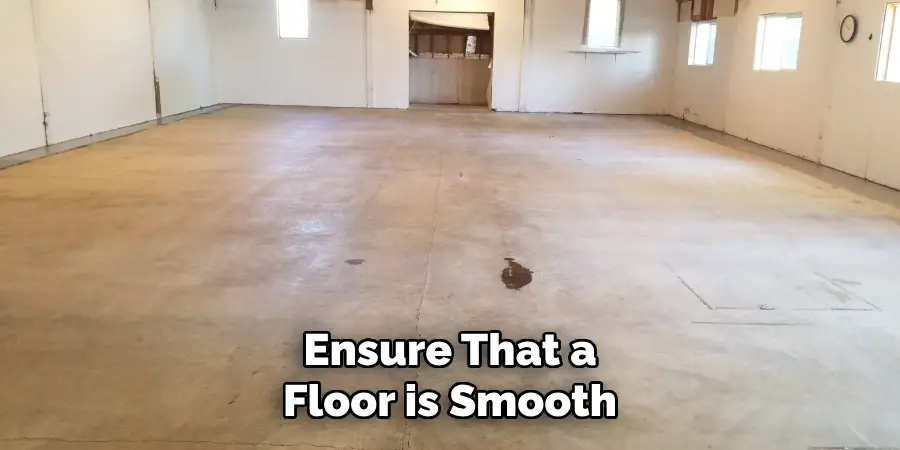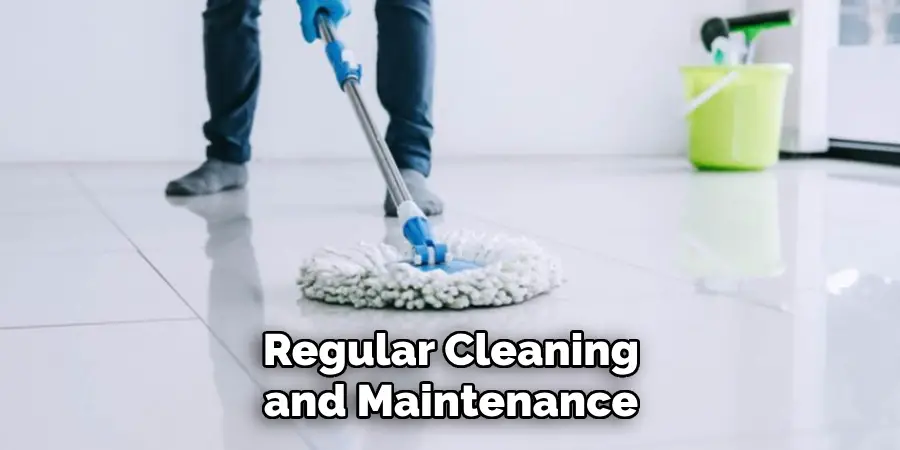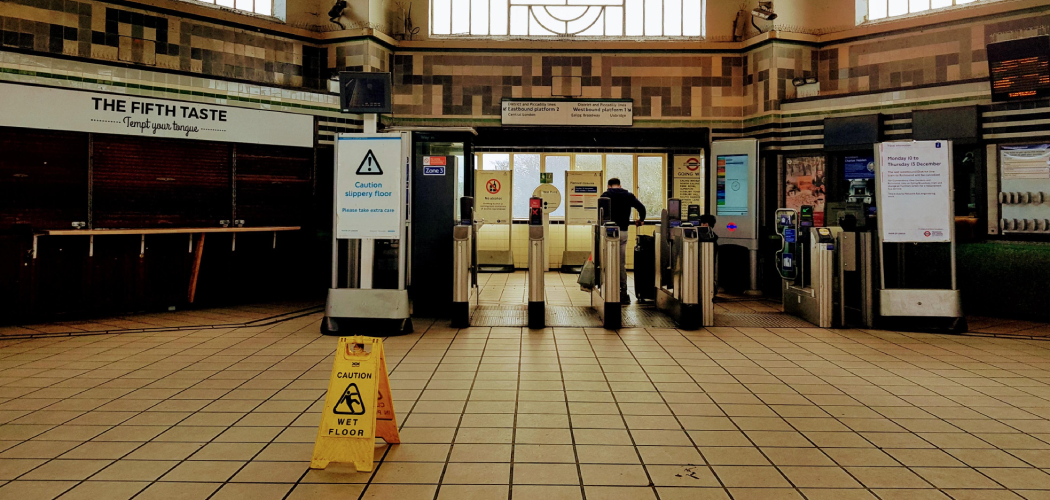Slippery floors can be hazardous and create hazardous conditions. Not only can they cause trips and falls, but they could also lead to sprains, broken bones, or even head injuries.

Fortunately, making floors less slippery is a relatively easy task that anyone can do. You can use several techniques, such as anti-slip coatings, adding non-skid mats and rugs, or increasing the texture of the floor.
The advantages of making a floor not slippery are numerous. For starters, it can help to reduce the risk of slips and falls, which are often responsible for serious injuries. It can also improve the aesthetic appearance of a room by creating a more polished look. You can find step-by-step instructions on how to make a floor not slippery in this blog article.
Step-by-step Instructions for How to Make a Floor Not Slippery
Step 1: Inspect the Floor
Before attempting to make a floor not slippery, it is important to inspect the material from which it is made. Depending on the type of floor, different methods may be necessary to ensure it is smooth.
Step 2: Clean the Floor
Once you have determined what kind of flooring you are dealing with, the next step is to clean it thoroughly. This includes wiping up any dirt, dust, grease, and grime. Once the floor is clean, you can apply a non-slip coating to it. This coating may be either paint or an adhesive material such as anti-slip tape.
Step 3: Install Anti-Fatigue Mats
Installing anti-fatigue mats in high-traffic areas can help reduce the risk of slips and falls. These mats are designed to absorb shock and provide cushioning, making them ideal for reducing fatigue and making floors less slippery.

Placing anti-slip strips or treads on the floor can also help make it less slippery. These strips are usually made of rubber, plastic, or metal, providing extra traction when walking on the floor.
Step 4: Install Carpeting
Carpeting is another great way to make a floor not slippery. Carpets provide cushioning for feet and absorb shock, which helps reduce slips and falls. Using non-slip area rugs in high-traffic areas can also help reduce the risk of slips and falls. These rugs are usually made with a rubber backing, which provides extra traction.
Step 5: Apply Anti-Slip Wax
Applying an anti-slip wax to the floor can also help reduce the risk of slips and falls. This wax is usually made of beeswax, mineral oil, and carnauba wax. Installing non-skid furniture pads on all pieces of furniture can help reduce the risk of slips and falls. These pads are usually made of rubber, which provides extra traction and prevents furniture from sliding on the floor.
Step 6: Maintain Regular
Finally, to ensure that a floor is smooth, it is important to maintain it regularly. This includes regular cleaning and re-coating with anti-slip wax or coatings. It is also important to replace any anti-fatigue mats or non-slip treads that become worn or damaged.

Following these steps will help ensure your floor remains safe and slip-resistant for years.
Tips for How to Make a Floor Not Slippery
- Regularly clean and maintain your floors using the appropriate cleaning agents for different types of flooring. Regular maintenance helps remove dirt, dust, spills, or any other debris that may have accumulated on the floor, improving traction.
- Apply non-slip coatings to the flooring surface that will help improve its slip resistance. These coatings can include anti-skid paints or other specialized products such as non-slip tape, mats, and sealants.
- Place a rugs or runners in areas of the home that tend to be more slippery. The additional traction provided by these materials will help reduce slips and falls.
- Wipe up spills or wet messes as soon as possible to reduce the risk of slipping on a wet surface.
- Wear shoes with non-slip soles, and avoid wearing shoes that easily slide or slip when walking on slippery surfaces.
- Install handrails in areas with stairs and slippery surfaces to provide additional support and stability. Place non-slip mats or tape on the handrails for extra protection.
- Have people remove their outdoor shoes before entering your home, as outdoor soles usually have more dirt, making an area more slippery.

Following these tips and taking the necessary safety precautions can help make a floor not slippery and keep your family safe. It’s important to regularly inspect your floors for any signs of wear or damage and take action when needed.
How Often Should You Check and Clean the Surface of Your Non-slip Flooring?
It’s important to regularly inspect and clean your non-slip flooring to maintain its properties. Depending on your flooring type, this could range from daily to monthly inspections.
Carpeted floors should be vacuumed or swept at least once a week, while hardwood floors should be mopped weekly with a damp mop or cloth. For more frequent maintenance, you can use a vinegar and water solution or an all-purpose cleaner to help remove dirt and debris.
In addition to regular cleaning, it’s also important to check the condition of your flooring periodically. Look for any areas that may have worn down over time or are starting to become slick with use.
If necessary, apply a coat of floor wax or non-slip treatment to these areas to make them less slippery and maintain traction. Follow the manufacturer’s instructions on how often you should reapply for treatments.
What Are the Best Floor Mats and Rugs for Preventing Slips?
Floor mats and rugs can be an effective way to make a floor less slippery. Slip-resistant mats are usually made from rubber or vinyl, which provide excellent traction on wet and dry surfaces.
Rugs with short pile carpets and anti-skid backing can also help reduce slipping by providing more grip for your feet. Additionally, adding textured runners along slippery areas can help reduce the risk of slips and falls.
For maximum safety, be sure to select mats that are certified by an independent testing laboratory for anti-slip protection. In addition to preventing slipping, floor mats and rugs can make a space more visually attractive while adding comfort underfoot.
To ensure your floors remain safe, it is important to regularly inspect and replace your floor mats and rugs when necessary. Worn, frayed, or filthy mats can reduce their slip-resistant properties and should be disposed of immediately.
What Type of Maintenance is Necessary for Keeping a Floor Not Slippery?
Regular cleaning and maintenance are key to keeping a floor not slippery. Vacuuming, sweeping, or mopping your floors regularly will help remove dirt buildup that can cause slippery surfaces.

Additionally, you should use a no-wax cleaner designed for the type of flooring you have to keep it looking its best and reduce slipping hazards. For slippery tile surfaces, you can apply a special anti-slip treatment that will create an invisible tread on the surface of the flooring.
If your floors need to be sealed or finished properly, seal or refinish them as soon as possible to reduce slipping hazards. Sealing and finishing your floors will also help keep dirt from accumulating and creating a slippery surface.
Finally, if your floors are in an area prone to moisture, such as a kitchen or bathroom, you should consider installing non-slip mats or rugs. Non-slip mats and rugs can help reduce slipping hazards caused by water and other liquids that may accumulate on the flooring.
What Are Some Common Causes of Slips and Falls on a Floor?
The common causes of slips and falls on a floor include slippery surfaces, poor lighting, inadequate maintenance, clutter or debris on the floor, and loose rugs or carpets. Slippery surfaces can result from waxes, oils, greases, wet floors, spilled liquids such as water, or other drinks and foods.
Poor lighting can cause shadows, reducing visibility, making it difficult to see potential hazards on the floor. Inadequate maintenance can accumulate dirt, dust, and debris, making the surface more slippery. Loose rugs or carpets can bunch up and cause tripping hazards, presenting a slipping hazard when wet.
Conclusion
In conclusion, preventing a slippery floor is a manageable challenge that can be accomplished with the right materials and techniques. When selecting the appropriate anti-slip treatment, it’s important to consider the room usage, foot traffic, and overall style.
Whether you need something as simple as installing non-slip mats or applying an anti-slip coating, making your floors less slippery will reduce the risk of slips, trips, and falls. Reading this post has helped you learn how to make a floor not slippery. Make sure the safety precautions are carried out in the order listed.

